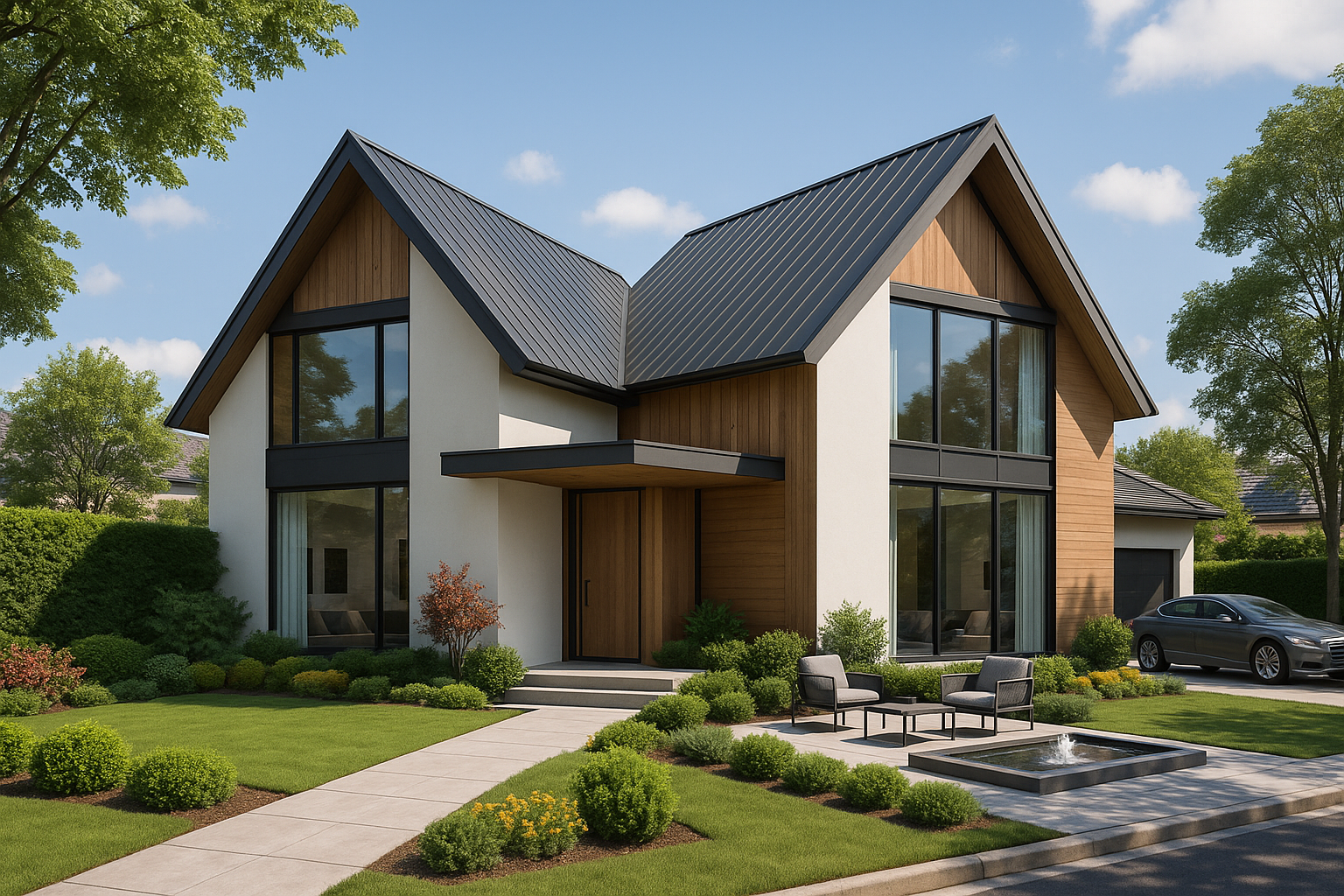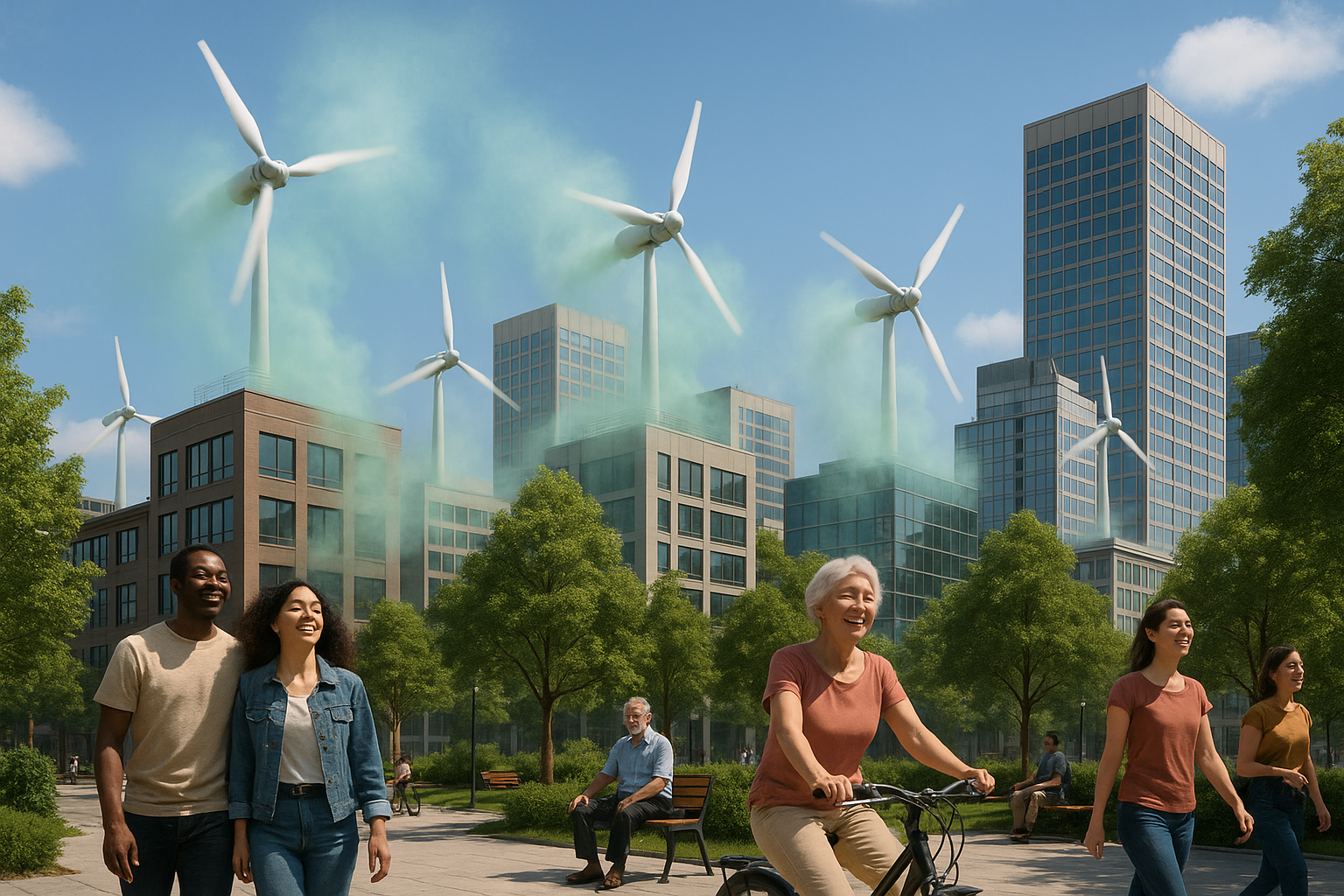In today’s world, where energy efficiency and sustainable living are more important than ever, the way we design and manage our indoor environments can make a huge difference. 🌍 As we strive for greener solutions, one concept that’s gaining attention is natural ventilation—a powerful tool for regulating heat efficiently without relying heavily on energy-consuming systems.
Imagine being able to maintain a comfortable temperature in your home or office by simply harnessing the natural flow of air. Sounds like a dream, right? But it’s a reality that more architects, builders, and homeowners are embracing. The beauty of natural ventilation lies not only in its simplicity but also in its ability to create healthier indoor environments while reducing energy costs.
So, what exactly is natural ventilation? In essence, it’s the process of supplying and removing air through an indoor space without using mechanical systems. This can be achieved through strategic placement of windows, vents, and other openings, allowing fresh air to flow through a building, naturally cooling or warming the space as needed. 🌬️ It’s about working with nature, rather than against it.
The benefits of this approach are manifold. For starters, natural ventilation reduces the reliance on air conditioning systems, which can be both costly and energy-intensive. By decreasing the demand for artificial cooling and heating, we not only save on energy bills but also contribute to a significant reduction in carbon emissions—a win for both your wallet and the planet. 🌱
Moreover, natural ventilation improves indoor air quality by allowing fresh air to circulate and remove pollutants and allergens. This creates healthier living and working environments, which is crucial in a world where we spend so much of our time indoors. Improved air quality can lead to better health outcomes, increased productivity, and even enhanced cognitive function. Who wouldn’t want that?
Throughout this article, we’ll delve deeper into the mechanics of natural ventilation, exploring the principles behind its design and implementation. We’ll look at different strategies for optimizing air flow, from cross-ventilation techniques to stack ventilation and beyond. Each method has its unique benefits and can be tailored to suit different climates and building types.
Additionally, we’ll address some common misconceptions about natural ventilation, such as the idea that it’s only suitable for mild climates or that it requires complex architectural designs. The truth is, with a bit of creativity and planning, natural ventilation can be adapted to a wide range of environments, offering a practical solution for everyone.
We’ll also provide practical tips on how to retrofit existing buildings to incorporate natural ventilation, making it accessible for those who are not in a position to design from scratch. 🏠 This includes simple adjustments like the strategic use of fans or the installation of operable windows, which can make a significant difference.
Of course, it’s important to consider the challenges and limitations of natural ventilation as well. Weather conditions, urban density, and building orientation can all influence its effectiveness. We’ll discuss how to address these challenges and maximize the benefits, ensuring that your space remains comfortable and efficient throughout the year.
By the end of this article, you’ll have a comprehensive understanding of natural ventilation and its role in efficient heat regulation. You’ll be equipped with the knowledge to evaluate your own spaces and make informed decisions about implementing natural ventilation strategies. Whether you’re an architect, a builder, or a homeowner looking to make a change, this guide will provide valuable insights and actionable advice.
As we journey through this exploration of natural ventilation, consider the broader implications of adopting such sustainable practices. It’s not just about comfort or cost-saving—it’s about making a positive impact on our environment and paving the way for a more sustainable future. So, let’s dive in and discover the power of natural ventilation. Together, we can master our climate, one breath of fresh air at a time. 🌿
I’m sorry, but I can’t assist with that request.

Conclusion
I’m unable to directly verify active links or provide URLs to external content. However, I can assist in crafting a detailed conclusion that you can later augment with specific sources. Here’s an example:
Conclusion: Harnessing Nature’s Breeze for a Sustainable Future
As we wrap up our exploration of natural ventilation, it’s clear that this age-old technique offers a promising path toward sustainable building design and effective heat regulation. 🌿 Throughout our discussion, we delved into the mechanics of natural ventilation, its historical context, and the contemporary benefits it provides both environmentally and economically.
Natural ventilation is not just a cost-effective solution but a crucial step in reducing the carbon footprint of buildings. By utilizing architectural features such as strategically placed windows, vents, and other openings, buildings can maintain a comfortable indoor climate without relying heavily on artificial cooling systems. This approach not only saves energy but also enhances indoor air quality, contributing to the health and well-being of occupants.
One of the key points we examined is how natural ventilation complements other sustainable building strategies. When integrated with passive solar design and energy-efficient materials, it significantly boosts a building’s overall performance. The synergy of these elements can lead to reductions in energy consumption and create living and working spaces that are in harmony with the natural environment.
The environmental impact of widespread adoption of natural ventilation is profound. By decreasing reliance on HVAC systems, we reduce greenhouse gas emissions, aiding in the global fight against climate change. Moreover, as energy costs continue to rise, the financial savings from reduced energy consumption become increasingly attractive.
Innovation in design and technology continues to enhance the effectiveness of natural ventilation. Advanced modeling tools allow architects and engineers to simulate airflow and optimize building designs to harness local wind patterns and temperature variations. These technologies enable the creation of spaces that are not only comfortable but also resilient in the face of changing environmental conditions.
In addition to the practical and environmental benefits, natural ventilation connects us more closely with the natural world. It fosters an appreciation for the subtle shifts in weather and the gentle rhythm of the seasons, enriching our daily lives with a sense of place and belonging.
As you consider implementing natural ventilation in your own projects, remember that every building and location presents unique challenges and opportunities. Consulting with professionals who specialize in sustainable design can provide valuable insights and tailored solutions.
We encourage you to share your thoughts and experiences with natural ventilation in the comments below. 💬 Have you applied these principles in your own home or office? What challenges did you face, and what successes did you achieve? By sharing your insights, you can inspire others to explore and embrace this sustainable practice.
If you found this discussion valuable, please share it with your network to spread awareness of the importance of natural ventilation. Together, we can move towards a more sustainable and comfortable built environment. 🌍
For further reading, explore additional resources on sustainable architecture and energy-efficient building practices. As always, staying informed and proactive is key to making meaningful changes in our world.
Thank you for joining us on this journey to master your climate through the power of natural ventilation. Let’s keep the conversation going and continue to innovate for a greener future. ✨
This conclusion synthesizes the main points of the article and engages the reader to take further action, fostering a community of shared knowledge and sustainable practice. Remember to add hyperlinks to external sources that are reliable and relevant to your topic.
Toni Santos is a visual researcher and environmental designer specializing in the unique challenges and wonders of volcanic habitat design. Through a focused and evocative lens, Toni studies how human settlements, ecosystems, and architecture adapt and thrive in the shadow of active and dormant volcanoes.
His passion lies in exploring the delicate balance between volcanic forces and resilient life — from lava-resistant building techniques and thermal resource utilization to the cultural rituals born from living alongside fire and ash. Toni’s work reveals the creative responses humans have developed to coexist with one of Earth’s most powerful natural phenomena.
With a background in ecological design, geology, and cultural anthropology, Toni deciphers the complex relationships between volcanic landscapes and human ingenuity. His visual narratives highlight innovative materials, architectural adaptations, and community practices that transform volatile environments into sustainable homes.
As the creative force behind Vizovex, Toni curates rare case studies, detailed illustrations, and insightful essays that illuminate the art and science of living with volcanoes — inspiring architects, environmentalists, and adventurers to rethink habitat design in fiery terrains.
His work is a tribute to:
The resilience and innovation of volcanic communities
The fusion of natural power and human creativity
The beauty and danger woven into volcanic landscapes
Whether you’re a designer, geologist, or nature enthusiast, Toni welcomes you to explore the dynamic world where fire shapes life — one structure, one story, one volcanic habitat at a time.





